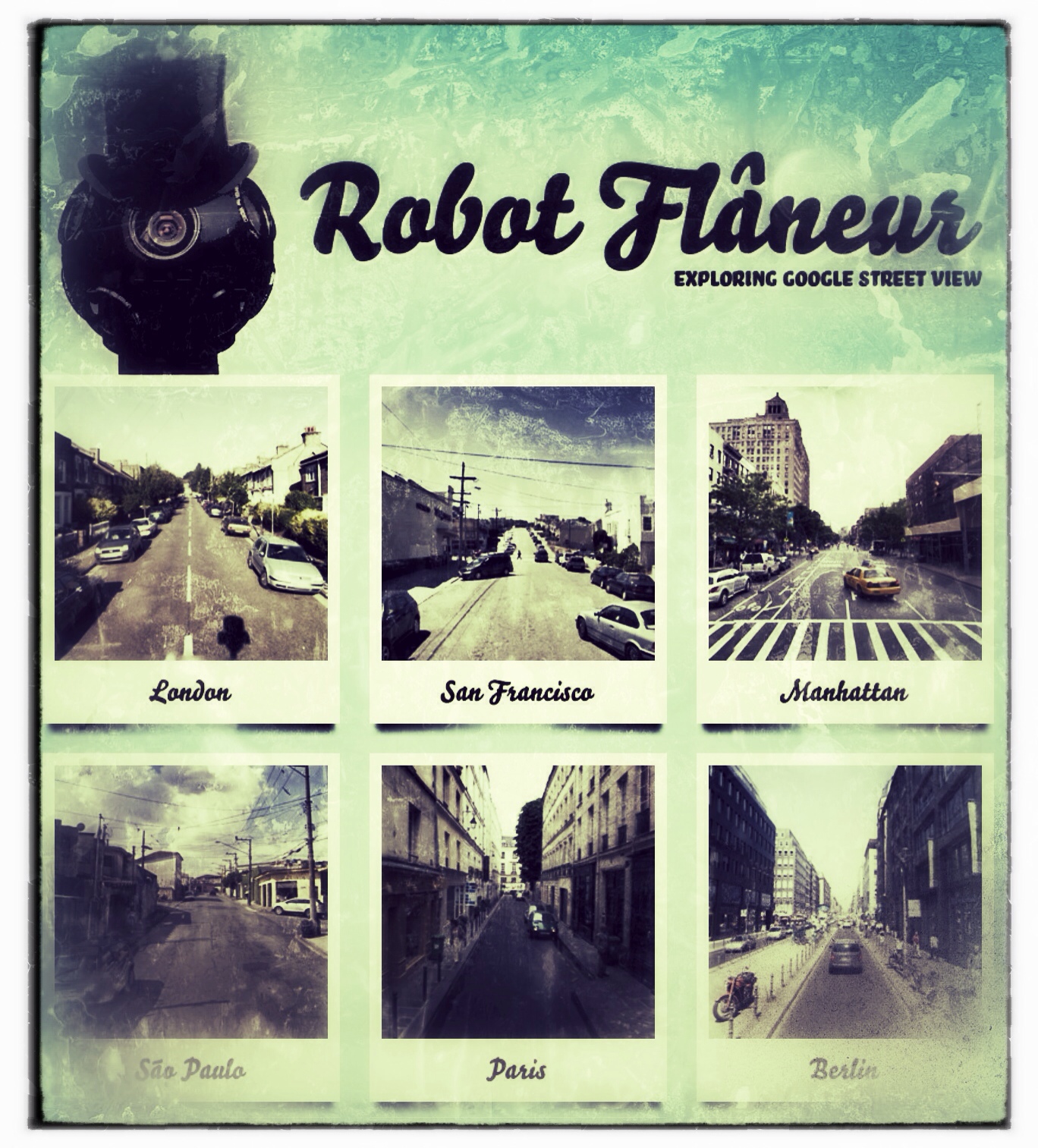How do flâneurs indulge their habit when confined to their studies, jockeying their bureaus?
We read. We write. We shuffle and curate photographs. But sometimes — jonesing uncontrollably for a brief flânerie fix — we dive into the digital arcades. The popularity of my recent post on cyberflânerie has prompted me to share a secret pleasure.

Sometimes, while I’m supposed to be massaging meter or decluttering stories, I plug in the Robot Flâneur and savor the guilty pleasure of Parisian flânerie. Or Mexico City. Or Tokyo… Robot Flâneur is a visual “explorer” based upon the magic of Google Street View. Just pick one o the nine cities around the world and enjoy the voyeurism. But not for long! Remember, there’s all that work to do…
This digital indulgence, courtesy of London-bassed writer and technologist James Bridle (booktwo.org), is simple but intriguing. And not a little habit forming.
“Google Street View is both the view from the machine (from the car, the Ballardian view-of-our-times) and the view of the machine (the way the machine sees). Overlayed with data augmentation, from a non-human-natural perspective (the roof of the car), slightly lensed (fish-eyed), wholly networked.” ~ James Bridle
I can hear your voice vibrating through the internets: “Wonky!” And you’re right. Sort of. But Bridle may not be the best one to articulate the sizzle in his “web flâneur” steak. It’s siren call is really enticing, especially because it’s only an effortless mouse click away most of the time. But don’t take my word for it.
Utterly useless but strangely compelling site… The idea is simple. You find yourself in a random London location in Google’s Street View. Thirty seconds later you’re teleported to another random location. That’s it… [And yet] Robot Flâneur is oddly addictive. ~ Matt Brown (Londonist)
Take a scenic vacation sans pants… Each slideshow’s interactive shots have been hand-picked to most accurately represent the local urban culture, and’re navigable using keyboard shortcuts, which’ll inevitably end up getting you lost in an area where you’ll have to roll up your computer’s windows and lock the doors. (Thrillist)
Robot Flaneur… allows users the experience of a casual stroll around famed cities… Though simplistic, its voyeuristic capabilities prove addictive… For those of you with shorter attention spans, new images are refreshed every 30 seconds, with the option to zoom in, zoom out, or skip around. Just consider this the ultimate staycation. ~ Laura Feinstein (PSFK)
What are you waiting for? Give it a try! (But remember to drop a crumb trail…)
Related articles
- What is a Flâneur? (virtualdavis.com)
- Ascent of the Cyberflâneur (virtualdavis.com)
- Mindfulness and Flânerie (virtualdavis.com)
- The Loquacious Flâneur (virtualdavis.com)
- Metro Flâneur (virtualdavis.com)
- Google Street View Captures Stunning Images of American Poverty Too (motherboard.vice.com)
- Google’s Street View Goes Into The Wild (npr.org)






